20 Resilient Outdoor Plants That Thrive No Matter What
It's impossible to overlook the bright blooms and lush greenery in the gardens and yards during the spring and summer. Think again if you've always believed that your yard is too shady, too dry, or the soil is too sandy to be so beautiful. Actually, while choosing plants, these typical problems could inspire you to be more creative.
RELATED: 27 Perennial Plants That Will Keep Your Garden Blooming
We've compiled a list of gorgeous, low-maintenance plants that flourish in even the most difficult conditions, along with helpful advice from seasoned plant experts. Don't allow a dry or low-light location prevent you from designing the garden of your dreams; you can easily acquire these hardy beauties at nearby nurseries and garden centers.
RELATED: 20 Simple Vegetables, Fruits, and Herbs Perfect for Beginner Gardeners
For more inspiration on how to make the most of your outdoor space, check out these Brilliant Ideas to Transform Your Small Backyard into a Dreamy Outdoor Retreat.
RELATED:A Month-by-Month Guide to Planting Vegetables in Your Garden
1| Ajuga
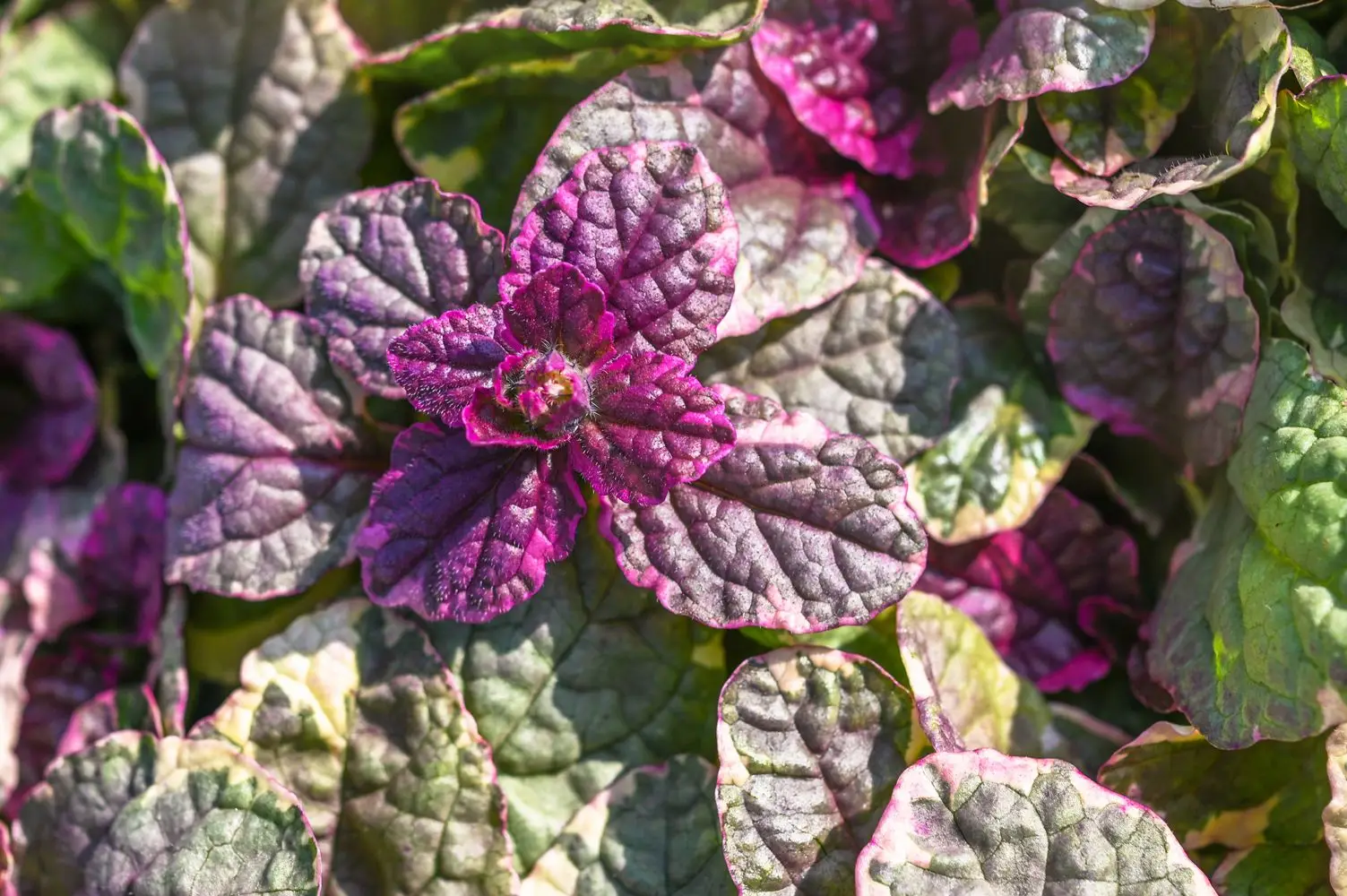
PHOTO: Better Homes & Gardens
Best for: Backyards with shadows
It might be challenging to identify plants that will flourish in your backyard if it receives little sunlight and is primarily shaded. Nonetheless, there are many tough and lovely plants that thrive in areas with little light. Certain plants, such as Ajuga, are ideal for filling in those spaces. The blue-purple blooms of Ajuga, a weed-smothering groundcover, give color in the spring, and during the rest of the gardening season, it produces a thick mat of dense leaves. Variegated kinds such as "Burgundy Glow" have silver and pink hues on their leaves for added flair. Ajuga is a low-maintenance option for locations that receive shade because it is a perennial, meaning that once planted, it will return year after year.
2 | Caladium
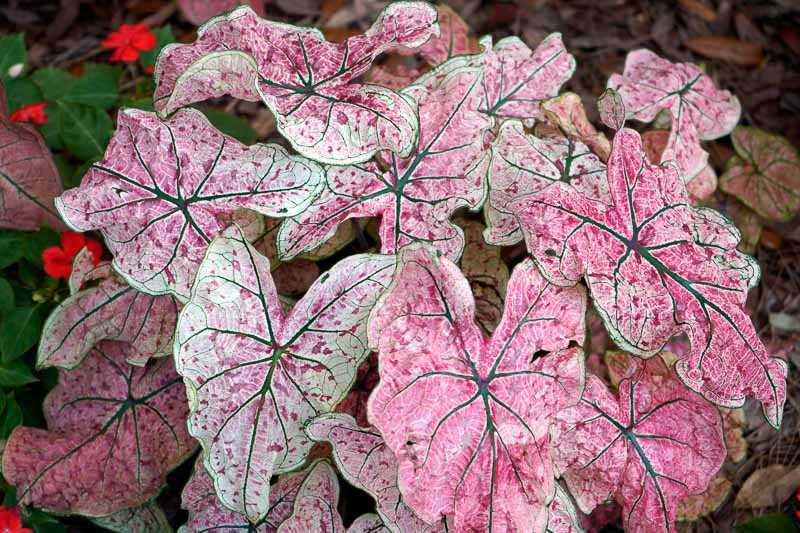
PHOTO: Gardenia.net
Best for: Backyards with shadows
Caladium's striking, colorful foliage will give your shaded backyard a hint of tropical flair. Caladium, which is well-known for its arrowhead-shaped leaves in red, pink, and white hues, adds a pop of color to any garden. Particularly stunning in the shade are the white species, which appear to shine, especially at sunset. During the growing season, Caladium thrives in the ground, but it can also be dug up and kept in a cool location for replanting the following year.
RELATED:
3 | Persian Shield
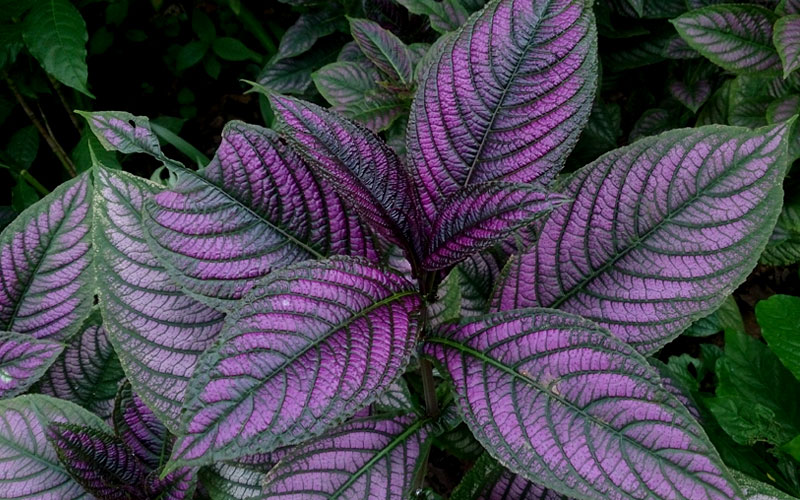
Best for: Backyards with shadows
The Persian Shield is an excellent option if you're searching for a plant that can grow in garden beds or containers, in both sun and shade, and in both northern and southern regions. This hardy plant's metallic-purple leaves makes it a show-stopper in addition to being low-maintenance. It gives any garden a distinctive splash of color, whether it is planted alone or in combination with other plants. To continue to appreciate its beauty all year long, treat it like an annual or, for a little adventure, bring it inside during the winter and put it in a bright position.
4 | Oakleaf Hydrangea

PHOTO: Martha Stewart
Best for: Backyards with shadows
The oakleaf hydrangea shrub is a good choice if you're searching for plants that can survive in even the heaviest shade. Particularly for front yards, its enormous, cone-shaped blooms and robust, textured foliage provide stunning appeal. When other shrubs may have completed flowering, this plant continues to bloom into the summer. It starts blooming in mid-June. Even in locations with little light, the oakleaf hydrangea guarantees a consistent display of lovely blooms all season long.
RELATED 1: The Toughest Hydrangea Varieties That Will Grow Well in Your Zone
RELATED 2: Caring for Hydrangeas: From Planting to Creating Beautiful Bouquets
5 | First Frost Hosta
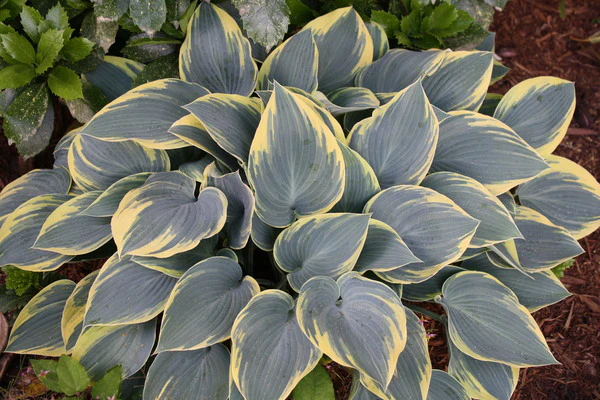
PHOTO: Plant Delights Nursery
Best for: Backyards with shadows
Hostas are a great option for dry, shaded areas. These plants, which may reach heights of 16 inches and widths of 30 inches, are ideal for filling up regions with little light. Shaded spots are ideal for hostas, and darker types do especially well in these situations. Particularly suggested is the "First Frost" variety, which has exquisite pale lavender flowers and lovely variegated foliage.
6 | Carex Pensylvanica
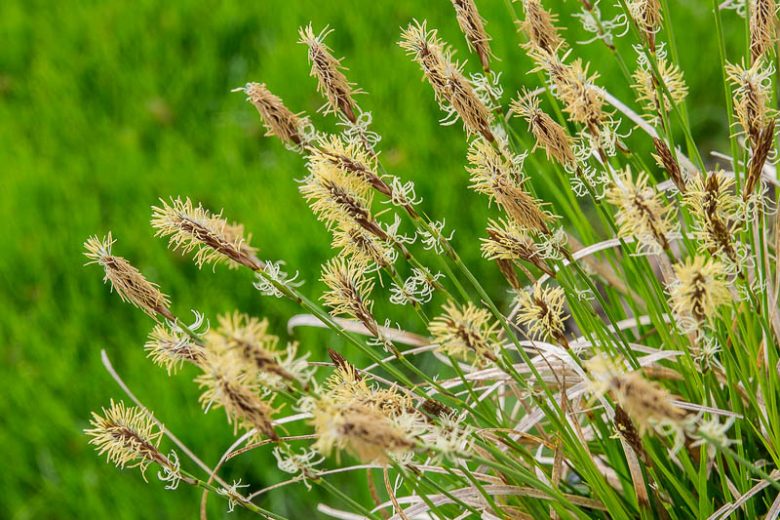
PHOTO: Gardenia.net
Best for: Backyards with shadows
For areas that need shade, this ground cover is a great substitute for grass. It spreads easily around the garden to cover bare spots without crowding out already-existing plants. It provides a gentle texture and mixes in perfectly with other vegetation to produce a lush, low-maintenance environment. Combine this with flowering plants that require little light, such as hellebore, to give the calm greenery a splash of color.
7 | Agave

PHOTO: Penberth Plants
Ideal for: Backyards at Risk of Drought
It can be difficult to choose the proper plants if your yard is dry and bright. For these circumstances, the low-water succulent agave is a great option. Agave plants come in a wide range of varieties and are renowned for their eye-catching look. For added visual appeal and to survive in arid, sunny locations, look for variegated kinds with two-tone leaves, such as ones with yellow borders and deep green cores.
8 | Desert Rose
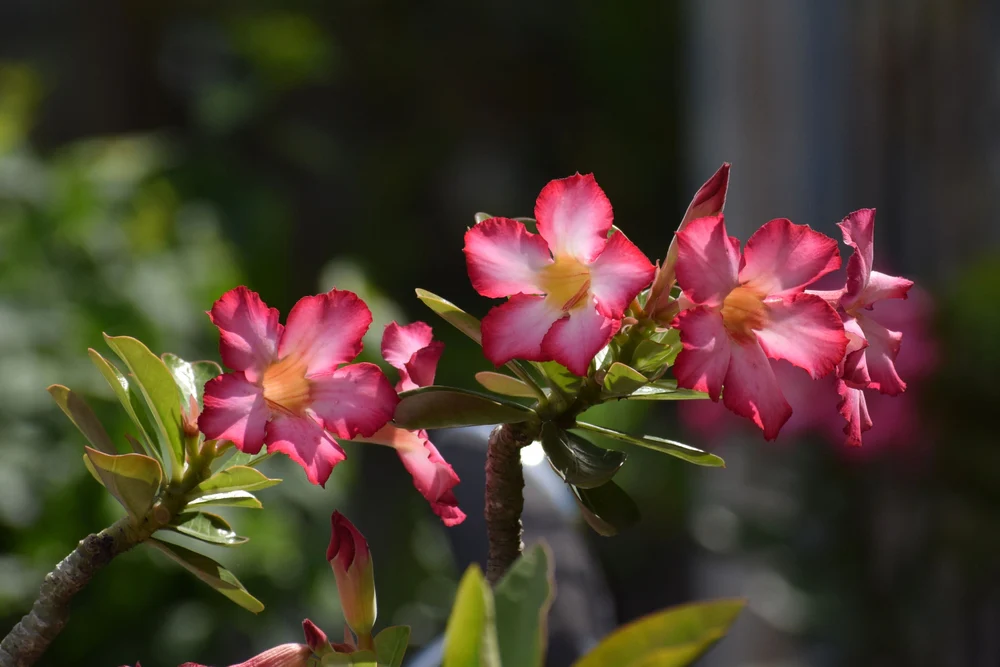
PHOTO: Ugaoo
Ideal for: Backyards at Risk of Drought
Not every succulent has spines! The desert rose is a beautiful plant that thrives in regions that are prone to drought because of its thick, squat stem, which stores water. It needs little care, and its colorful, extravagant blooms enhance any garden. For a desert-inspired design, use it with cactus or other succulents when establishing an indoor garden or backyard. Treat it as a perennial in areas that don't get frost, and grow it as an annual in areas that do.
9 | Sedum
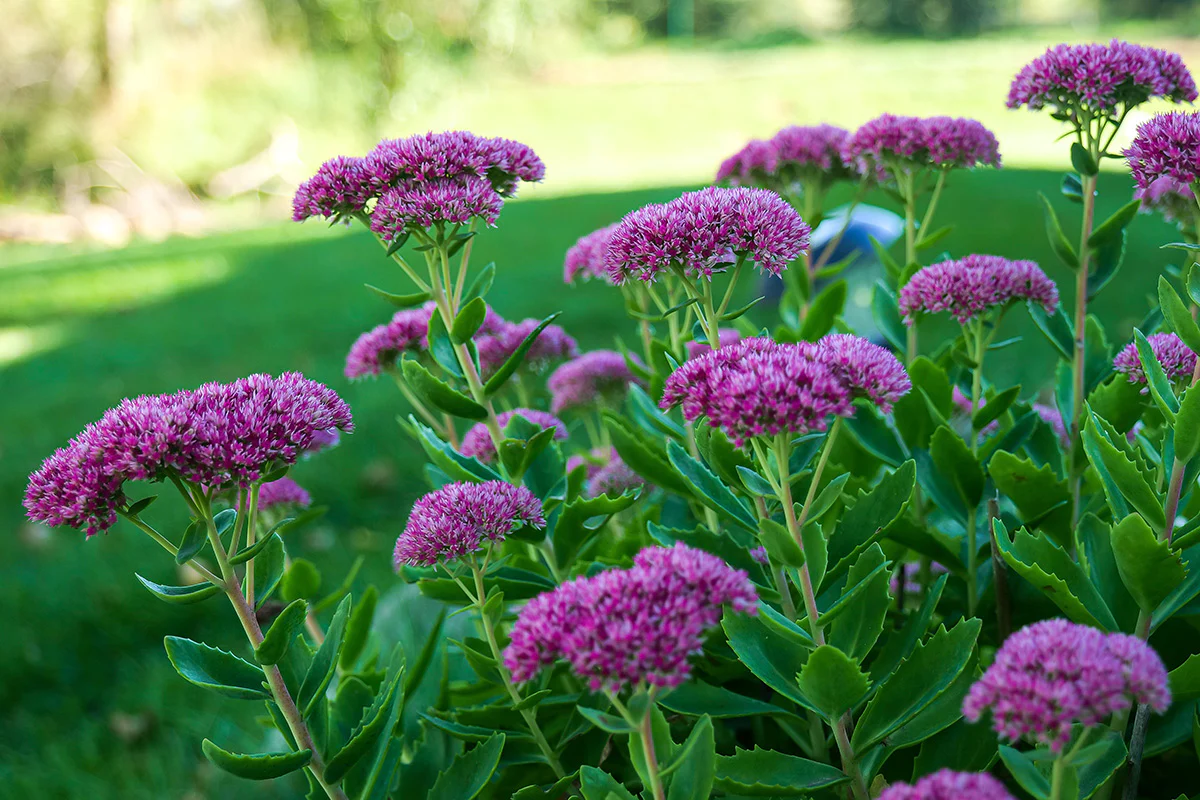
PHOTO: Genus Gardenwear
Ideal for: Backyards at Risk of Drought
Even during the hottest summer months, sedum thrives with little watering, making it the ideal low-maintenance plant. There are countless options for any garden thanks to its variety, which includes groundcovers and tall bloomers. Consider utilizing a sedum tile, a "living carpet" of tiny plants that may be found at garden centers, for simple planting. Planting is as easy as setting the tile on loose soil, giving it plenty of water at first, and then watching it grow as it adapts to its new environment.
10 | Armeria
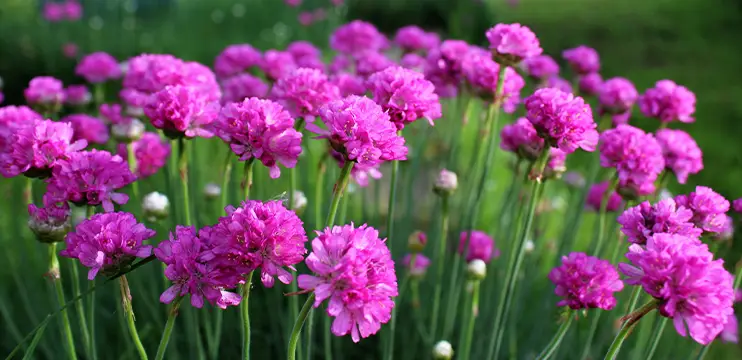
PHOTO: Benara Nurseries
Ideal for: Sandy soil backyards
Armeria is a great option for gardens with sandy soil, particularly those close to the seaside. This low-growing, hardy perennial can tolerate strong seashore breezes and salt sprays and grows well in sandy soil. Armeria, with its globe-shaped red, pink, and white flowers and tufts of grassy foliage, is a charming addition to any beachfront landscape. It is the ideal addition to windy coastal regions because it elegantly hugs the ground and grows only 6 to 10 inches tall.
11 | Dianthus
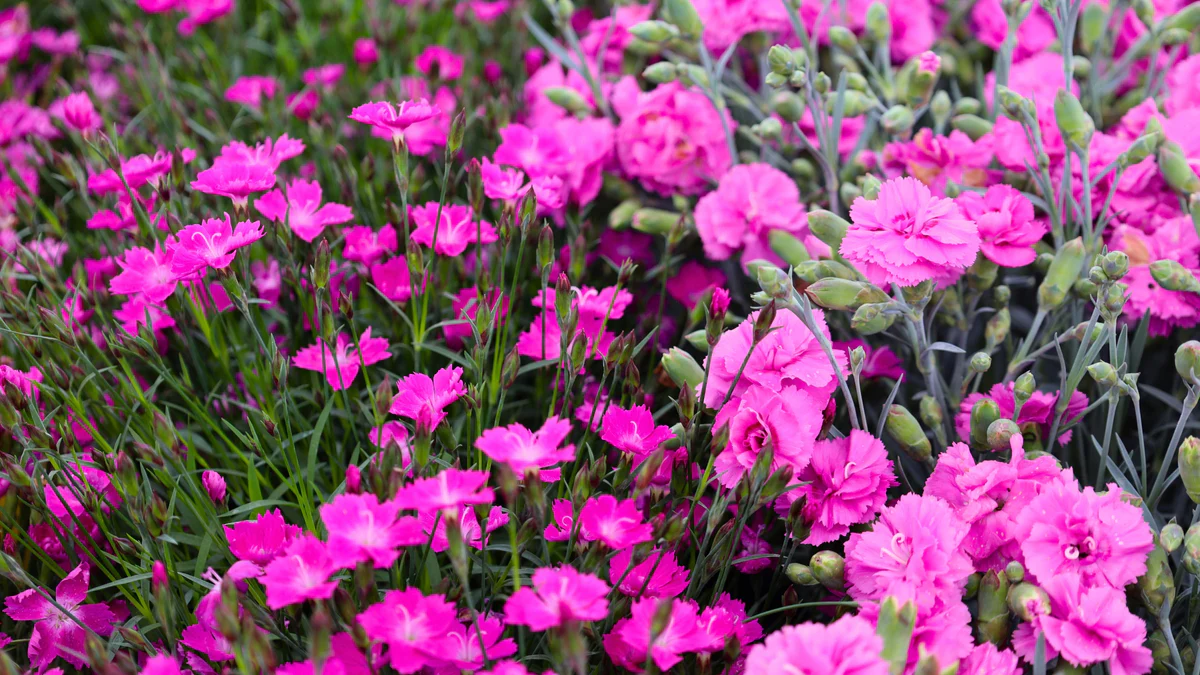
PHOTO: Garden Goods Direct
Ideal for: Sandy soil backyards
Dianthus is a fragrant delight that adds beauty and fragrance to sandy soil. Often scented before seen, this flowering plant is well-known for its beautiful purple, pink, white, and lavender blossoms. Certain cultivars, such as "Kahori," bloom from spring into summer. The blue-green foliage of dianthus, along with its gorgeous blossoms, makes it an ideal addition to garden beds or containers. Its vivid colors and delightful scent will enliven any area.
12 | Shrubby Cinquefoil, "Primrose Beauty"
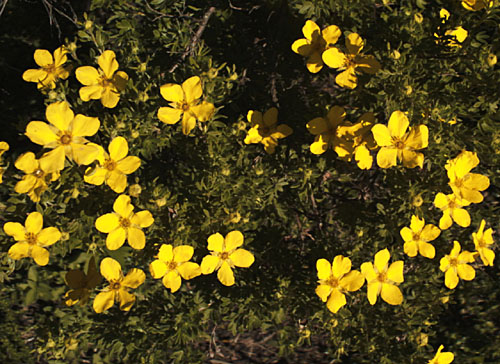
PHOTO: UConn Plant Database
Ideal for: Sandy soil backyards
Primrose beauty is an excellent choice for sandy soil. This flowering shrub requires little care and grows best in full sun and well-drained soil. From June to September, its pale yellow blossoms add brightness to the landscape and provide color that lasts without pruning. It is the ideal companion to other plants because it won't overpower your landscape with its maximum height of about three feet.
13 | Threadleaf Tickseed
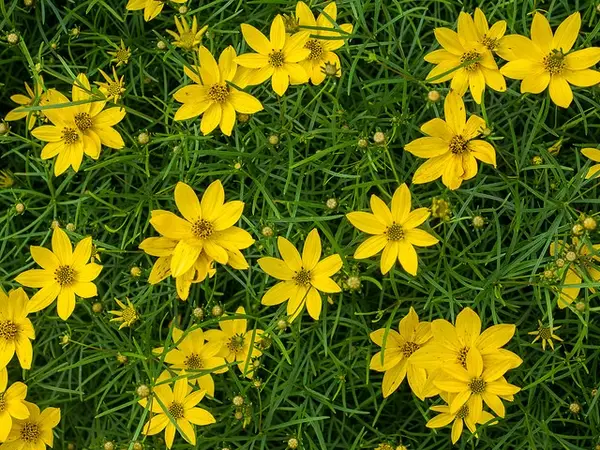
PHOTO: North Carolina Extension Gardener Plant Toolbox
Ideal for: Sandy soil backyards
This flowering plant is essential if you want to draw butterflies and bees to your yard. It's ideal for adding a pop of color to your yard because of its vivid golden blossoms, which bloom from June to July and into the fall if you cut the wasted blooms. It's also a fantastic option for cutting gardens because of its tolerance for light trimming. In addition to adding color to your garden, the cheery blossoms will entice avian guests to take in your area.
14 | Butterfly Weed
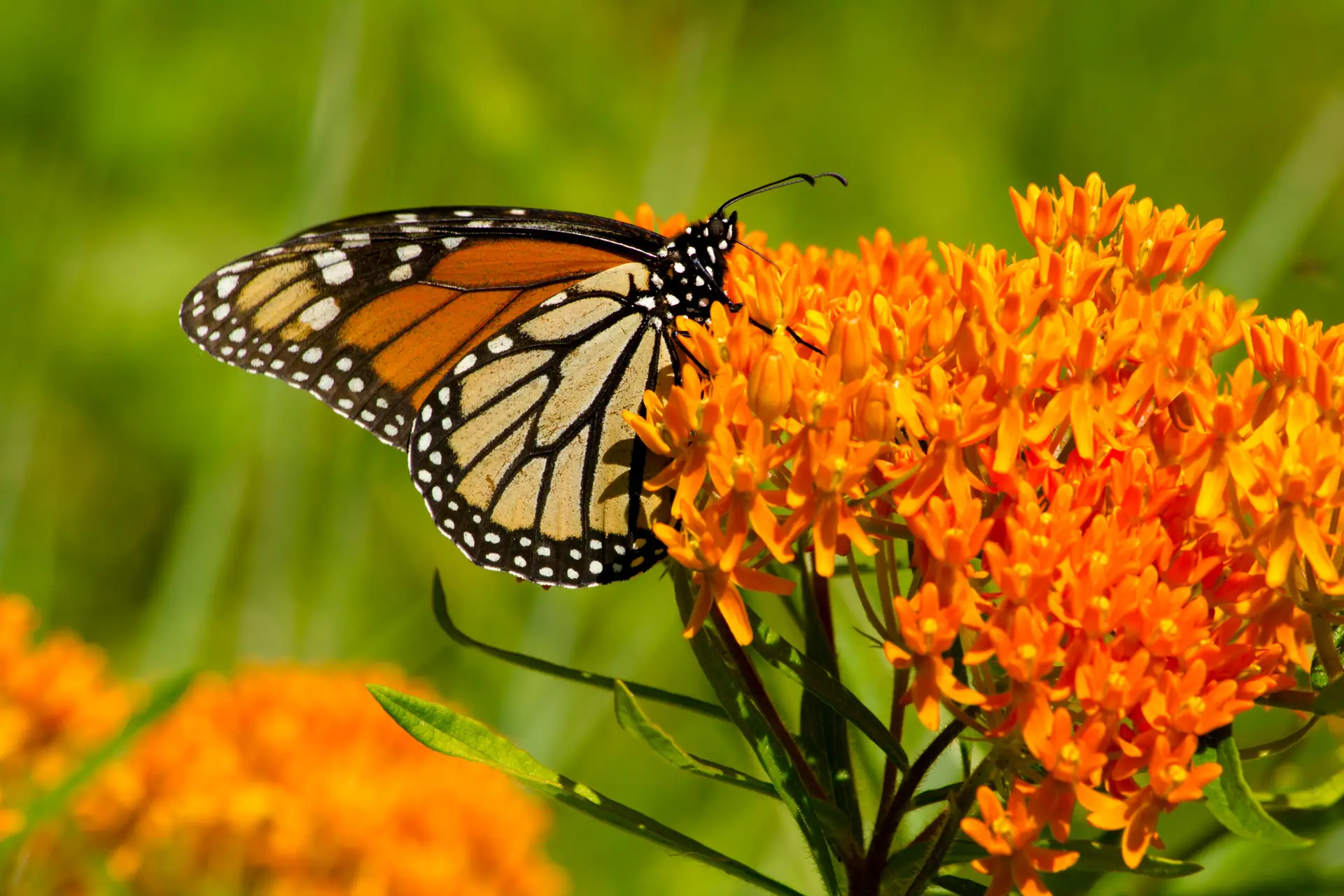
PHOTO: The Plant Native
Ideal for: Sandy soil backyards
Butterfly weed's vivid orange blooms and function as a host plant for monarch butterflies make it an exceptional option for sandy soil. Since milkweed leaves are the only food supply for its caterpillars and the plant on which monarchs lay their eggs, milkweed is vital to the survival of the species. Milkweed is indigenous to North America and grows well in a variety of climates, with the exception of some regions of the Pacific Northwest. It is a low-maintenance addition to your garden because of its ability to withstand sandy soil and different weather conditions. This low-maintenance plant is likely to turn heads with its vibrant blooms and the swarm of butterflies it draws.
15 | Lilac Sage, aka "Purple Rain"
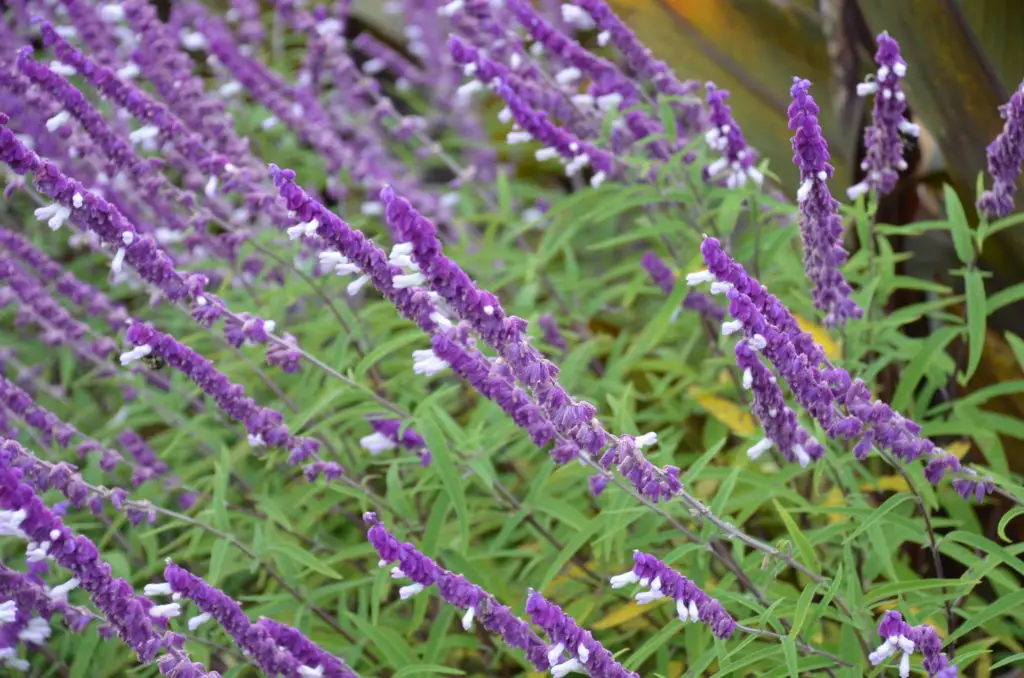
PHOTO: What Grows There
Ideal for: Sandy soil backyards
Because of its eye-catching purple color, lilac sage is a flexible addition to sandy-soil gardens that blends well with almost any other garden color. It is a dependable option for gardeners due to its capacity to flourish on soil that drains well. Cutting back the stalks helps revitalize the plant and promote new growth, even though the flowers are robust and may occasionally droop under their own weight. Lilac sage blooms from July to September, providing months of brilliant color. You may prolong the flowering season and keep your garden vibrant late into the fall by deadheading the spent blooms.
16 | Lobelia
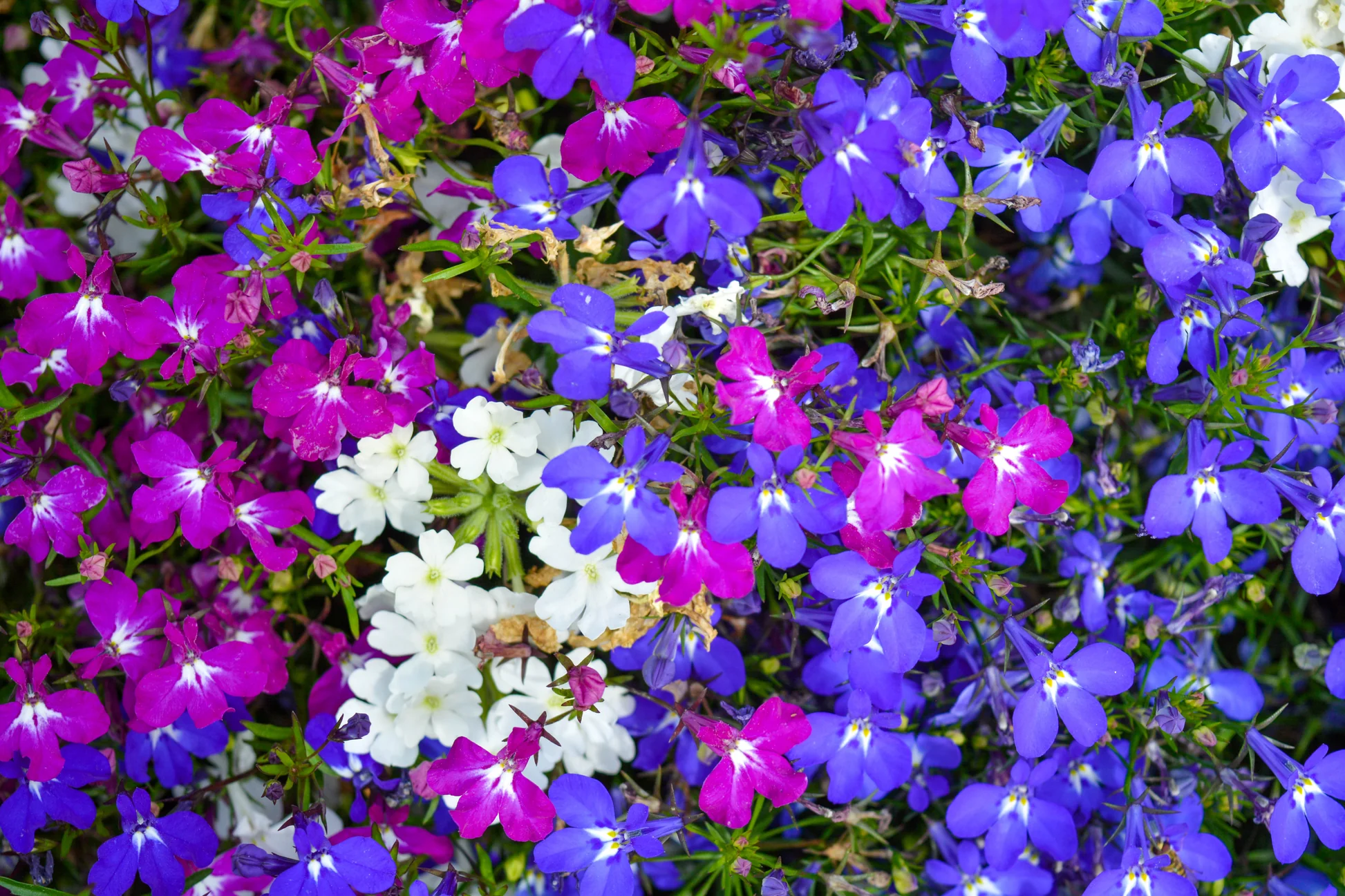
PHOTO: Yorkshire Seeds
Best for: Backyards with shadows
Lobelia's vivid purple blooms are the ideal way to add color to any shaded garden. This plant thrives in chilly fall weather and dislikes direct sunlight and temperatures above 70°F. It looks beautiful in containers or along garden walls with its cascading blossoms. Resilient and low-maintenance, Lobelia may recover from drooping with a brief trim, particularly when cooler weather arrives.
17 | Lenten Rose
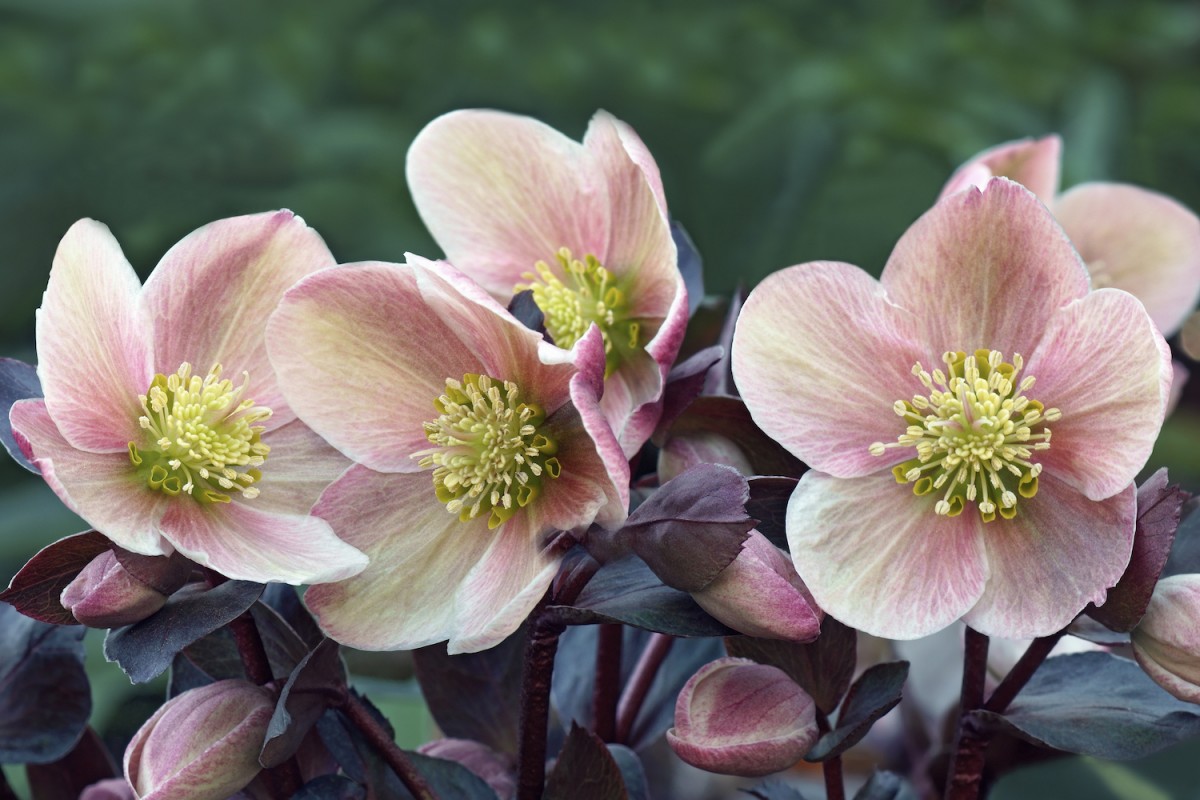
PHOTO: Flower Magazine
Best for: Backyards with shadows
Lenten Rose is an exceptional hellebore type that will add a pop of color to your shaded landscape. These resilient perennials provide an amazing array of vivid, striking blooms and do well in cool temperatures and shaded spots. They are a great way to add beauty to your garden early in the season because they can even bloom while the ground is still covered in snow.
18 | Japanese Forest Grass
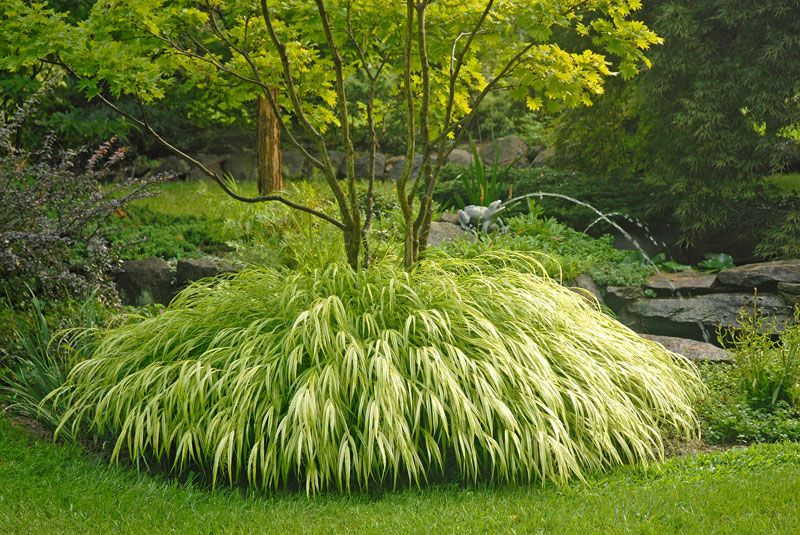
PHOTO: Stark Bro's
Best for: Backyards with shadows
These pretty decorative grasses, which look like shaggy pom-poms, will add a fun texture to your shady landscape. These plants grow in tidy, spherical clusters and are ideal for places that don't receive much sunlight. They give a whimsical yet elegant touch to any gloomy part of your yard.
19 | Cranesbill
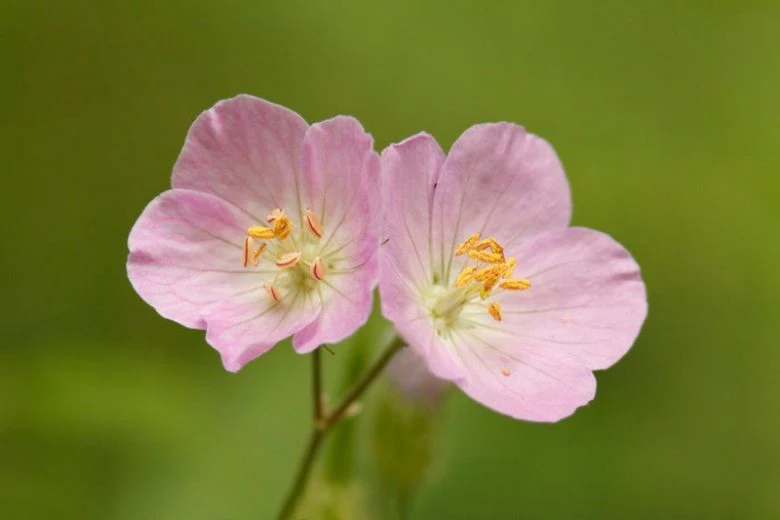
PHOTO: Gardens of the World
Best for: Backyards with shadows
Cranesbills, sometimes referred to as hardy geraniums, are incredibly resilient and live up to their name. These plants bloom from late spring to summer, with some types blooming continually, and have beautiful pink and purple blossoms. They are ideal for low-maintenance gardening, grow well in shady spots, and can tolerate a range of environmental factors while still producing colorful blooms.
20 | Begonia
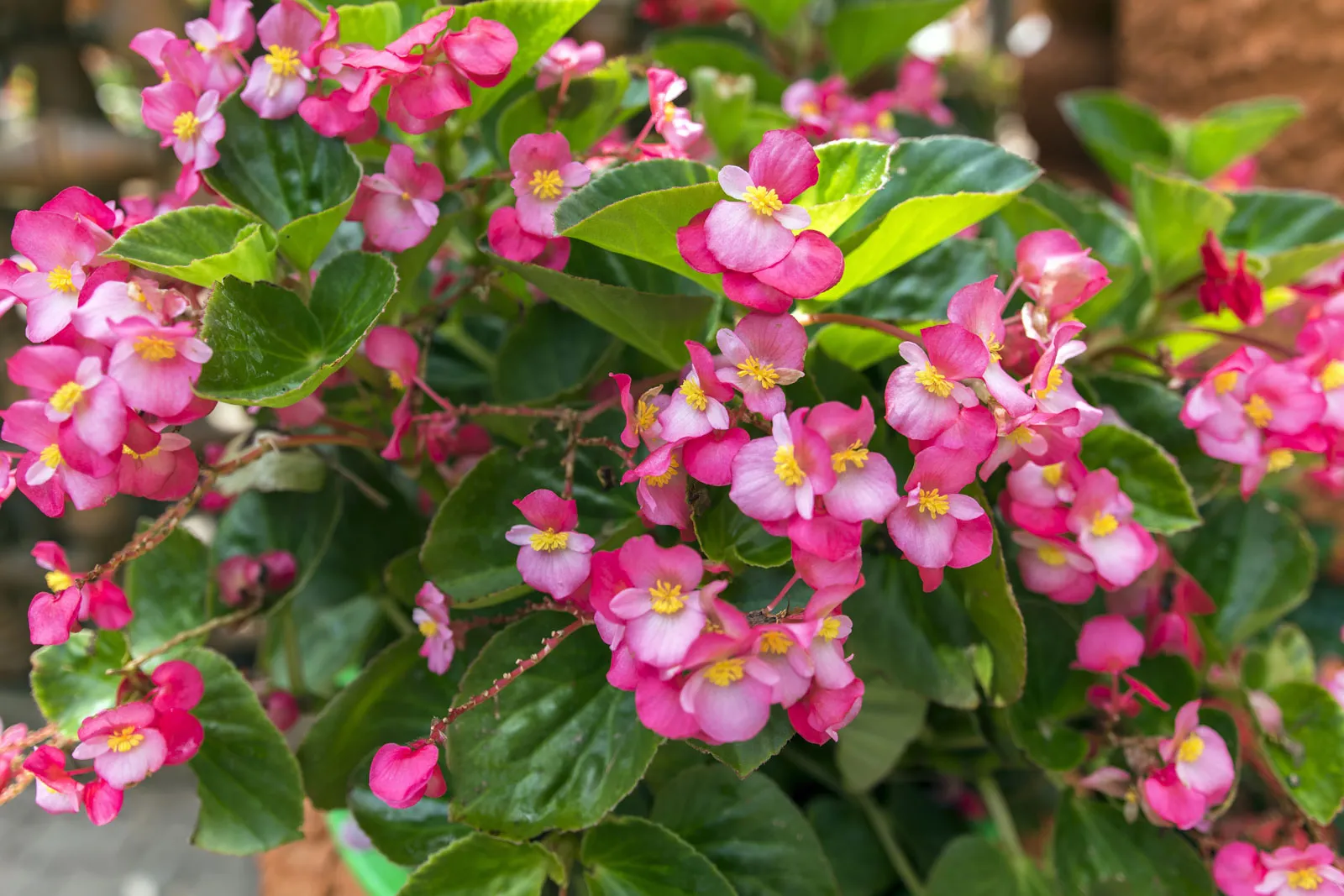
PHOTO: Britannica
Ideal for: Anywhere
Begonias can be used in any type of garden. These flowers, which come in a wide variety, including pretty polka-dot variants, add a pop of color wherever they are placed. They grow well as annuals, tolerate both sun and shade, and look great in pots, garden beds, or any other inventive arrangement. They are popular for bringing individuality to any outdoor area because of their broad color spectrum.
How frequently should outside plants be watered?
Although rain naturally hydrates, it's not always sufficient. The majority of outdoor plants require at least one inch of water every week to flourish. Use hand watering as a supplement if your area becomes smaller. Rainfall can be tracked with the aid of a rain gauge. However, plants that can withstand drought can require little to no more water, so it's important to know what your garden requires.
How can I rid my outdoor plants of pests and bugs?
Not every pest is equally dangerous; some only cause slight harm, while others have the potential to seriously injure plants. Effective control of the pest depends on its identification. Plants can be physically removed into soapy water, water-sprayed to remove pests, or affected branches trimmed to stop the infestation from spreading.
RELATED: 12 Common Garden and Lawn Weeds You Should Know—and How to Eliminate Them for Good
What characteristics distinguish outdoor plants that are impossible to eradicate?
These plants can withstand periods of neglect, grow well in regular potting soil, tolerate typical home humidity and temperature, and flourish in low or indirect sunlight.
Which plants are resistant to all types of weather?
Hardy plants that can withstand a range of high temperatures include agave, sedum, geraniums, herbs, and chives.
Which outdoor potted plants require little care and are difficult to eradicate?
Low maintenance is needed for herbs like thyme, rosemary, and sage. Even after extensive pruning, these resilient plants can recover again and time again.





